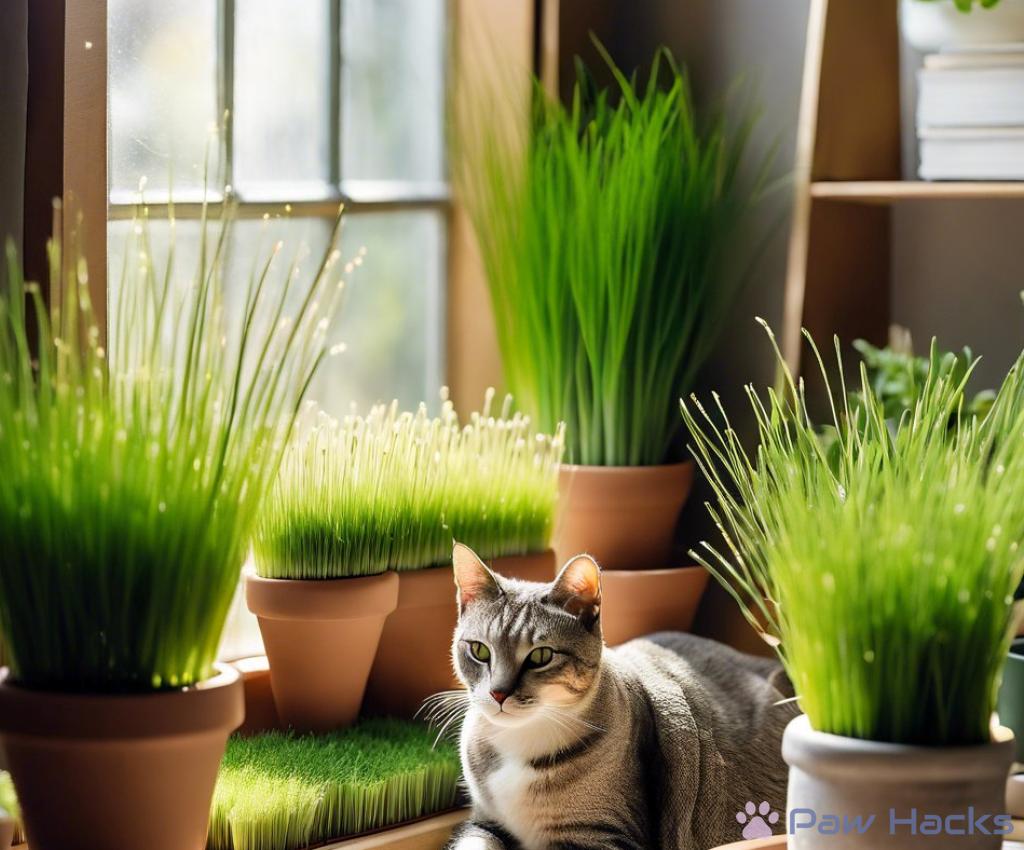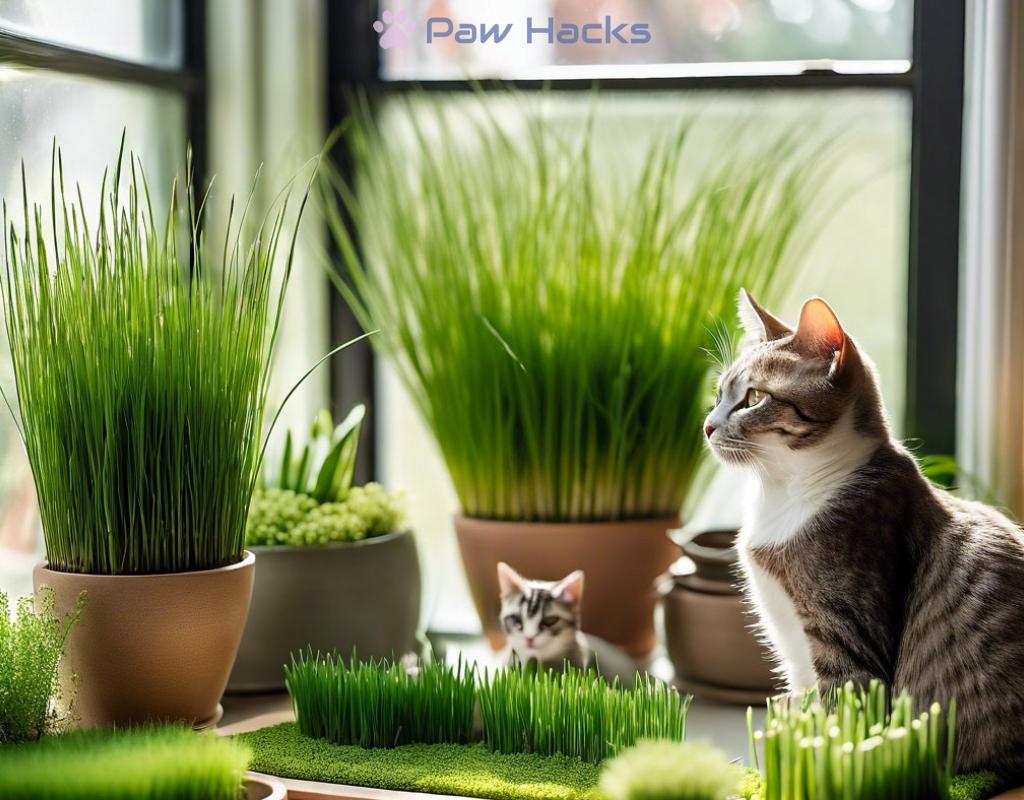Cat Grass Kits for Indoor Gardens
The Ultimate Guide to Choosing the Perfect Cat Grass Kit for Your Indoor Garden

Indoor cats often miss out on the natural instincts and health benefits they would get from the outdoors. Providing them with cat grass not only satisfies their craving for greens but also aids in digestion and helps prevent hairballs. It’s a simple way to enhance their quality of life and enrich their indoor environment.
When selecting a cat grass kit, there are several important features to consider. Understanding these can help you make a more informed decision that benefits both you and your furry friend.
- Variety of Grasses: Look for kits that offer a mix of grasses like wheat, oat, and barley. Each type provides different benefits and flavors that can appeal to your cat.
- Quality of Seeds: Ensure that the seeds are organic and free from harmful chemicals. This is crucial for your pet’s health.
- Ease of Growth: Choose kits that come with easy-to-follow instructions, as well as all necessary materials including soil, containers, and seeds.
- Size and Aesthetics: Consider where you’ll place the kit. Some kits come in decorative pots that can enhance your home décor.
- Growth Time: Check how long it takes for the grass to grow. Quick-growing options are ideal for impatient cats!
To help you make the best choice, we have compiled a comparison of some of the top-rated cat grass kits available on the market. This table highlights the essential features and price points of each kit.
| Brand | Grass Type | Organic | Price | Growth Time |
|---|---|---|---|---|
| Pet Greens | Wheatgrass | Yes | $8.99 | 7-10 days |
| Catit | Barley | Yes | $9.49 | 5-7 days |
| SmartyKat | Oatgrass | No | $7.99 | 6-8 days |
| Ultra Grass | Mixed | Yes | $10.99 | 7-12 days |
Benefits of Cat Grass: Why Your Feline Friends Will Love It

Cat grass is more than just a delightful snack for your furry companions; it serves a multitude of purposes that contribute to their overall health and happiness. As indoor cats often lack access to natural greenery, offering them cat grass becomes essential in simulating some of their wild instincts while providing significant health benefits. Let’s explore how this simple addition can make a profound difference in your cat’s life.
One of the most notable advantages of cat grass is its ability to aid in digestion. Cats are known to be obligate carnivores, but they occasionally consume plant material, which helps in the expulsion of hairballs and provides digestive relief. This natural instinct to nibble on greens can be satisfied with fresh cat grass. Moreover, the act of chewing on grass can stimulate their digestive system, leading to enhanced gut health.
Unlike many commercial cat treats loaded with preservatives and artificial ingredients, cat grass offers a safe and organic alternative. When you choose organic seeds for your cat grass kit, you ensure that your feline friends are consuming something free from harmful chemicals. This not only contributes to their health but also provides peace of mind for pet owners concerned about potential toxins. Furthermore, the freshness of home-grown grass makes it a more appealing option for your pets, enticing them to indulge in a natural treat that aligns with their instincts.
Providing cat grass is also an excellent way to enrich your cat’s environment. Cats are naturally curious creatures, and introducing them to cat grass can stimulate their senses and encourage interactive play. Watching your furry friend discover and enjoy their own patch of grass can be a joyful experience. Additionally, the act of nurturing a cat grass kit can engage you as a pet owner, fostering a deeper connection with your feline companion. The mere presence of greenery can enhance your home’s atmosphere, making it more vibrant and lively.
Step-by-Step Instructions for Growing Cat Grass Successfully at Home
Creating a thriving patch of cat grass at home is a rewarding endeavor that can significantly enhance your indoor cat’s well-being. The first step in this process is to gather all the necessary materials included in your cat grass kit, such as organic seeds, soil, and containers. Ensure that your workspace is clean and free from distractions, allowing you to focus on this enriching activity. It’s essential to read the instructions provided with your kit carefully, as different grass types may have specific requirements for optimal growth.
Once you have everything ready, it’s time to move on to the planting phase. Start by filling your container with the provided soil, ensuring it’s evenly distributed. Then, sprinkle the seeds generously over the top, as a rich density will lead to a lush patch of grass. After that, gently press the seeds into the soil and cover them lightly with a thin layer of soil. Water the seeds thoroughly but avoid waterlogging, which can hinder growth. Place the container in a warm, sunny spot where your cat can observe the grass as it grows. This visibility can pique their curiosity, adding an element of excitement to the process.
As your cat grass begins to sprout, it will require regular care. Keep the soil moist but not soggy, and ensure that the grass gets plenty of light. In just a week or two, you should start to see the first green shoots breaking through the surface. This is the perfect time to monitor the growth closely—your cat will be eager to taste their fresh greens! Once the grass reaches a height of about 4-6 inches, it’s ready for your feline friend to indulge in.
After the grass has matured, it’s time to let your cat enjoy the fruits of your labor! Gently cut a small section of the grass and offer it to your pet. It’s advisable to introduce the grass gradually to avoid any digestive upset. Monitor your cat’s reactions during the first few tastings, as some cats may take to it more enthusiastically than others. Regular harvesting can encourage new growth, ensuring your cat has a continuous supply of fresh grass. Always remember to clean up any fallen leaves or debris, keeping the area tidy for both you and your pet. By following these steps, you can create a sustainable, enjoyable, and health-promoting environment that your indoor cat will appreciate.
Exploring Different Types of Cat Grass: Which One is Right for Your Cat?
When it comes to choosing the perfect cat grass for your indoor garden, understanding the various types available can make all the difference. Each type of grass not only offers unique flavors and textures but also serves different health benefits that can cater to your cat’s specific needs. By exploring these options, you can ensure that your feline friend enjoys their green treat while reaping the maximum health benefits.
Wheatgrass is one of the most popular types of cat grass, and for good reason. This vibrant green plant is rich in vitamins, minerals, and amino acids, making it a nutritional powerhouse. Its fibrous texture helps in promoting digestive health and can aid in the reduction of hairballs. Cats tend to love the taste of wheatgrass, making it an excellent choice for picky eaters. If your cat enjoys nibbling on fresh greens, introducing wheatgrass into their diet can be a delightful experience.
For those looking for a softer option, oat grass is a fantastic alternative. Known for its mild flavor and delicate texture, oat grass is easy on the digestive system and can be particularly beneficial for younger cats or those with sensitive stomachs. Additionally, oat grass provides essential nutrients that contribute to overall wellness. Its lush appearance can also add a touch of greenery to your indoor space, enhancing the aesthetic appeal of your home.
Barley grass is another excellent choice for cat grass kits, packed with antioxidants and vitamins. This type of grass can help improve your cat’s immune system and overall health. Like wheatgrass, barley grass is fibrous and can aid in digestion and hairball prevention. If you want to give your cat a nutritional boost while satisfying their instinct to chew on greens, barley grass is definitely worth considering.
In summary, selecting the right type of cat grass for your indoor garden can significantly impact your cat’s health and happiness. Whether you opt for wheatgrass, oat grass, or barley grass, each option brings its own unique benefits to the table. To help you navigate your choices, here’s a quick comparison of the three types:
- Wheatgrass: High in nutrients, aids digestion, and popular with cats.
- Oat Grass: Gentle on the stomach, perfect for sensitive cats, and visually appealing.
- Barley Grass: Rich in antioxidants, supports the immune system, and helps with hairball control.
By understanding the unique qualities of each type of cat grass, you can create a thriving indoor garden that not only satisfies your cat’s cravings but also promotes their overall health and well-being.
Caring for Your Cat Grass: Tips to Keep It Lush and Green
Maintaining a vibrant and healthy cat grass patch is essential for your feline’s enjoyment and well-being. With the right care, your cat grass can thrive, providing a continuous supply of fresh greens for your pet. Here are some effective tips to ensure your cat grass remains lush and green, making it a delightful addition to your indoor garden.
Proper watering is a key factor in keeping your cat grass healthy. While grass requires moisture, overwatering can lead to root rot and other problems.
- Frequency: Water your cat grass when the top inch of soil feels dry to the touch.
- Method: Use a spray bottle or watering can with a gentle spout to avoid displacing the soil or seeds.
- Drainage: Ensure that your container has drainage holes to prevent water from pooling at the bottom.
Light is vital for the growth of cat grass. Indoor environments can sometimes lack sufficient natural sunlight, so it’s important to position your grass kit where it can receive the right amount of light.
- Direct Sunlight: Place your cat grass in a south-facing window for optimal light exposure.
- Artificial Lighting: If natural light is limited, consider using grow lights to supplement the light your grass receives.
- Rotation: Rotate your grass container periodically to ensure even growth on all sides.
Nourishing your cat grass with the right nutrients can enhance its growth and health. Choose quality soil and consider fertilizing periodically.
- Soil Type: Use organic potting soil that retains moisture while allowing for drainage.
- Fertilizer: Incorporate a diluted liquid fertilizer every four to six weeks to provide essential nutrients.
- pH Level: Aim for a neutral pH level in your soil for optimal growth.
By following these tips, you can ensure that your cat grass remains a vibrant source of nutrition and enjoyment for your indoor feline. Keeping your grass well-watered, adequately lit, and nourished with quality soil will not only provide a delightful treat for your cat but also create a lively, green atmosphere in your home.
Share this content:



